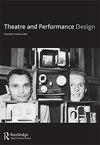对抗边缘化:立体模型和部落博物馆
Q2 Arts and Humanities
引用次数: 0
摘要
许多学者都强调了场景策略在改变博物馆展示内容方式方面的作用。在这篇文章的过程中,我想把重点放在部落博物馆展示中立体模型的使用,以及它们在塑造游客的期望和观点方面的作用。这种类型的场景装置已经在印度的许多博物馆中使用,致力于展示居住在次大陆各地的各种部落的生活方式。这些博物馆最初是为了保护和促进部落人民的文化而建立的,这些部落人民经常发现自己被主流社会边缘化,许多博物馆都有真人大小的立体模型,描绘了部落日常生活的场景。安装这些立体模型背后的想法是,它们提高了公众对不同部落文化特殊性的认识。然而,这些场景装置是否成功地为参观者提供了更好地理解部落生活的理想和价值观的背景,或者它们是否加剧了刻板印象,这些问题仍然存在。在这篇文章中,我将看看在印度和世界其他地区的不同部落博物馆中使用的立体模型,但我将主要关注位于德里的部落博物馆的立体模型。本文章由计算机程序翻译,如有差异,请以英文原文为准。
Contesting marginalization: diorama and tribal museum
ABSTRACT Many scholars have highlighted the role of scenographic strategies in transforming the ways in which museums display their content. In the course of this article, I want to focus on the use of dioramas in tribal museum display and their role in shaping the expectations and opinions of the visitor. This type of scenographic installation has been used in many museums in India devoted to showcasing the way of life of various tribes residing across the subcontinent. These museums were originally established in order to safeguard and promote the culture of tribal peoples who often find themselves marginalized in mainstream society and many contain life-size dioramas depicting scenes of everyday tribal life. The idea behind the installation of these dioramas is that they increased awareness among the general public about the specificities of the culture of different tribes. However, questions remain as to whether these scenographic installations succeed in providing context for the visitor to better understand the ideals and values of tribal life or whether they compound stereotypes. In this article I will look at the use of dioramas in different tribal museums across India and other parts of the world, but I will primarily focus on the dioramas in a tribal museum located in Delhi.
求助全文
通过发布文献求助,成功后即可免费获取论文全文。
去求助
来源期刊

Theatre and Performance Design
Arts and Humanities-Visual Arts and Performing Arts
CiteScore
0.40
自引率
0.00%
发文量
14
 求助内容:
求助内容: 应助结果提醒方式:
应助结果提醒方式:


